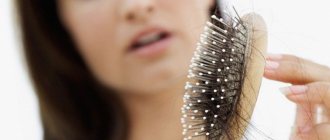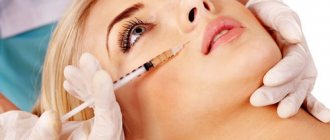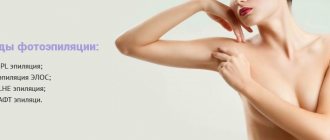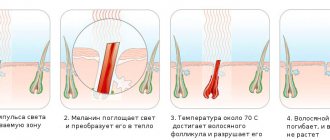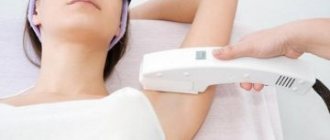Read in this article:
- What is photoepilation and how does it work?
- Advantages and disadvantages of the method
- Can light hair removal cause harm?
- How to choose a photoepilator?
- How to use a home photoepilator?
- Photoepilator: convenience and efficiency
Photoepilation is a modern and very effective method of hair removal. The technique appeared relatively recently, so it still raises many questions about the harm to the body, the peculiarities of the procedure, and how long the results will last. We understand all the nuances and advantages of this method.
What is photoepilation and how does it work?
Photoepilation is a hardware method of hair removal using light rays, which is why it is also called light hair removal. The basic principle is the effect on the pigment melanin, which is found in the skin and hair, has the ability to absorb and conduct light, and convert it into heat. As a result, the hair itself heats up to a temperature of 70-80°C, blood clots in the capillaries closest to it, and nutrition of the follicle stops. Because of this, the hair follicle dies.
The light pulse affects only those follicles that are currently in the growth phase. The procedure does not affect dormant hair follicles, but hair can begin to grow from them at any time. That is why several sessions are held at a certain period of time.
Understanding the essence of the effect, it is easy to understand how the photoepilator works. Such devices were previously used only in the salon, but now it is quite possible to carry out the procedure at home.
Each such device has a built-in lamp that sends a light pulse in the form of a flash of the set power. This technology is called IPL (Intensive Pulse Light or impulsive pulsed light).
Possible harm from photoepilation
The effect of photoepilation on the body is the safest way to remove hair from the body. But if you do not follow safety measures and contraindications, there is a possibility of dangerous consequences after the photoepilator. How dangerous is photoepilation, consider the most common complications below:
Painful sensations
Pain during the procedure occurs when the skin is hypersensitive or due to the high power of flares. You can muffle the pain with special cooling cool attachments and professional anesthetics.
Burns
Burns are the most common side effect after photoepilation, they arise due to a number of reasons, a fresh tan on the client, a cosmetologist’s mistake in setting the length of the flashes incorrectly, hair lengths more than 0.2 cm. Cosmetologists recommend treating the damaged area of skin with a healing cream against burns Bepanten or an analogue .
Attention! If watery blisters appear on the skin, do not delay visiting a doctor.
Inflammation of the hair follicle
Folliculitis occurs when there is excessive sweating.
People with hyperhidrosis are prone to this disease. Potassium permanganate, which is applied to the affected area, will help you cope with folliculitis at home. However, if there is a lot of inflammation in the area, you need to consult a dermatologist.
Pigmentation
Age spots are more likely to appear on dark skin, if the client’s skin color type is incorrectly determined and the device is set incorrectly, but also if the client treated the intended area to be epilated with moisturizing oils several days before the procedure. It is almost impossible to remove pigmentation at home, only with the help of hardware cosmetology and injections in a certified salon.
Swelling and severe redness of the skin
Hyperemia is a common side effect. To eliminate it, simply apply ice packs to the treated area. The duration of redness depends on the type of hair and its hardness.
Attention! In rare cases, slight redness on the skin causes itching. The presence of discomfort occurs in women who, before the manipulation, visited a solarium or sunbathed under the sun.
Scarring
They occur during a photo procedure if the patient has tattoos. But most often, clients neglect the cosmetologist’s recommendations and after depilation, a few days later, they tear off a skin crust on the healing area, which in no case should be touched; ultimately, an unsightly scar forms in this area. You can get rid of the scar conservatively using pharmaceutical gels or seek help from surgeons.
Advantages and disadvantages of the method
Before deciding on such a procedure, it is worth studying all its pros and cons. The main advantages of photoepilation include:
- Hygienic – during hair removal the device does not come into contact with the skin, so the transmission of harmful microorganisms through it is excluded;
- The procedure is carried out quite quickly, does not require a significant investment of time, the device acts on a large area of skin;
- The result lasts for a long time, and many hairs stop growing forever;
- There is an opportunity to save on the purchase of razors, depilatory creams, sugaring paste, wax strips;
- The use of a photoepilator is possible on any part of the body, including areas with thin and sensitive skin;
- Light waves stimulate the production of collagen, so the skin becomes more elastic and its regeneration processes are activated;
- The first results are noticeable almost immediately;
- There is no pain or discomfort even with a low pain threshold;
- During the procedure, the skin is not damaged, so the risk of infection is reduced to zero;
- The appearance of ingrown hairs is excluded.
The main disadvantage of photoepilation is related to the principle of its action. Light radiation cannot affect hairs that contain little or no melanin. For this reason, the procedure is not suitable for very light and gray hair.
The second nuance is the melanin content in the skin. Under the influence of sunlight, the pigment concentration increases and the skin darkens. That is why before the procedure you will have to avoid visiting the beach and solarium for several weeks.
The downside is the need for several sessions, with a significant break, in order to achieve truly smooth skin. In addition, there is a recovery period: for a week after using a home photoepilator, you should not visit the sauna or apply cosmetics to the corresponding area.
Restrictions during pregnancy and lactation
During pregnancy, expectant mothers should refrain from undergoing photodepilation to ensure the safety of the health and life of the child. During light exposure, pain may occur, especially with very sensitive skin, and due to a stressful situation, false contractions may begin or spontaneous pathological termination of pregnancy may occur. In addition to the main problem, unfavorable factors may arise such as:
- During pregnancy, there is a high probability of pigment spots appearing under the influence of light radiation.
- An unexpected allergic reaction to light flashes, resulting from hormonal changes in the female body.
- Increased dryness of the skin. During pregnancy, mothers' skin is dry, and hair removal using photo flashes additionally removes moisture, which leads to unsightly stretch marks.
- There is a danger of developing varicose veins of the labia.
Important! The period of breastfeeding does not apply to restrictions on photodepilation, but in order to avoid dangerous and side effects, it is necessary to consult a pediatrician
Can light hair removal cause harm?
Many girls are interested in why light hair removal is harmful and whether it has a negative effect on the body. In fact, the procedure is safe and does not cause any harm if you follow the rules for operating the device and preparing for hair removal.
Home photoepilators do not have such power that there is a risk of serious burns. However, on tanned skin, the light pulse can cause hyperpigmentation.
Photoepilation has a number of contraindications. The procedure cannot be performed if:
- Allergic skin reactions;
- Dermatological diseases;
- Complicated form of diabetes;
- Chronic arterial hypertension, cardiac ischemia;
- The presence of malignant neoplasms on the skin;
- Open form of herpes;
- Increased sensitivity of the epidermis to solar radiation.
This type of epilator should not be used by people with epilepsy and mental illness, impaired blood clotting, in a feverish state, or with severe varicose veins. If there are abrasions, burns or wounds on the skin, the procedure should be postponed, otherwise scars may form.
Undesirable consequences of photoepilation
Possible undesirable effects of the procedure can be divided into two categories: those that arose due to improper photoepilation and those that resulted from the patient’s failure to comply with recommendations during the recovery period.
The most common consequences include burns caused by excessively intense or prolonged exposure to light on the skin, as well as inflammation of the follicles due to the patient's neglect of personal hygiene requirements after hair removal.
By contacting qualified and experienced specialists, you can avoid all possible undesirable consequences. At the Telos Beauty Prof. clinic They use both classical and innovative methods of radical hair removal. Along with photoepilation, methods that have proven to be highly effective and have few contraindications include laser and ELOS hair removal. They are recommended in each case where there is a risk of harm from photoepilation or when contraindications to its implementation have been identified.
For detailed information and to make an appointment with a specialist, call us at the numbers listed on the website, or use the feedback form.
How to choose a photoepilator?
When choosing a device, you should immediately decide what the photoepilator is for. The optimal characteristics of the device are determined by the areas in which it is planned to be used. A device of any size is suitable for home use, but for traveling you should choose a compact model.
It is worth paying attention to several main characteristics:
- Light spot area - each flash covers an area of a certain area. The larger the light spot, the faster the procedure can be carried out;
- Lamp life is the number of flashes after which the lamp will need to be replaced. If you plan to treat large areas of skin, it is better to choose models with a long service life;
- Degrees of protection - many modern models are equipped with a function that provides a light pulse only when in close proximity to the skin. There are options with protection against accidental pressing when directed into the eyes;
- Power type - devices with a battery are more mobile, but they have a longer interval between flashes. Models powered by the network work quickly and continuously.
It is advisable to choose a device with a UV filter that protects against the negative effects of ultraviolet rays. It is very convenient if the device can adjust the flash intensity. Additional protection will be provided by a sensor that blocks flashes on dark skin to prevent burns.
Photoepilation or laser hair removal: principle of operation
The principle of operation of laser and photoepilation is very similar. Light exposure is aimed at hair in the active stage. The radiation heats the pigment contained in the hair follicle. As a result, hair loss occurs without replacing it with new hair.
Laser hair removal.
- Does not require individual laser settings and automatically adjusts the wavelength to suit skin type and hair color.
- The laser acts precisely on melanin, without affecting the surrounding vessels.
- The laser treatment area is smaller than photoepilation, so the procedure lasts slightly longer.
- Laser hair removal eliminates the appearance of burns and other side effects.
- No more than 21-28 days should pass between sessions.
Photoepilation.
- The effect is carried out using a photoflash, which allows you to treat large areas of skin at once, which makes the procedure quick.
- Photoepilation parameters are adjusted individually for each patient.
- If you incorrectly adjust the depth of exposure, there is a danger of getting burns or, conversely, not getting any results at all.
- The break between photoepilation sessions is 4-8 weeks.
How to use a home photoepilator?
Preparing for home photoepilation involves studying the instructions. If the procedure is carried out for the first time, also protect the skin from sunburn. The minimum hair length must be 3 mm, otherwise the impulse simply will not work. To remove hair you need:
- Turn on the device and bring it closer to the skin, paying attention to the indicators;
- Apply a special gel that scatters the rays;
- Run the device along the surface to be treated horizontally at an angle of 45°;
- When the device beeps, move it to the next area.
If after photoepilation a tingling feeling appears, small red spots appear on the skin, there is no need to be alarmed: this is a normal phenomenon that quickly goes away on its own. It is not recommended to apply greasy cream to the skin, as it impedes the supply of oxygen to the skin. After the procedure, additional hydration is necessary to avoid dry skin, so you need to drink at least 1.5 liters of water per day. The hot bath will have to be temporarily replaced with a cool shower.
Possible complications
The safety of the procedure is ensured only if the contraindications and recommendations prescribed for it are fully observed. However, there are also consequences of photoepilation, which can be reflected in its effectiveness or the girl’s health.
The main consequences of photoepilation:
- Thermal burn. Occurs when the procedure is performed incorrectly;
- Skin irritation and inflammation. It is usually associated with the client’s failure to comply with recommendations for preparation for the session, as well as care after it;
- Complications of diseases that the girl had before visiting the salon;
- Reduced effectiveness of the procedure;
- Pigmentation;
- Scar formation.
After photoepilation, the skin may experience itching and tingling for several hours; such side effects are quite common. Lubricate the skin with Bepanten or Panthenol to speed up the restoration of the epidermis.
Photoepilator: convenience and efficiency
To decide whether to buy a photoepilator for home, it is enough to study the advantages of this procedure and make sure there are no contraindications. Such a device will allow you to get rid of excess hair for a long time, ensure safety and absence of pain, and also help make your skin more elastic and firm.
How effective is photoepilation?
It is not for nothing that this procedure is one of the most popular in cosmetology. You will see the result after the first session. And the final number of sessions will depend on the type of hair and the intensity of its growth. In any case, with the help of professional high-tech equipment you will get rid of unwanted vegetation for a long time, and in some cases - forever. The only exception is gray hair. Bleached hair is not susceptible to photoepilation. And that's why…
Efficiency of the procedure
The high efficiency of the photoepilation technique has been proven by many years of experience in its use. People who have tried it note the absence of side effects, and after 4-5 procedures, the majority report an almost complete disappearance of the growth of unwanted hairs on the body.
It is important to note that during the first procedure, the flash affects only the roots; the hair shafts themselves are not destroyed. That is why, after two weeks, the hairs fall out on their own.
After three or four procedures, the vegetation on the human body is halved, grows more slowly, and becomes less dense.
Post-procedure care
A completely normal reaction of the skin to such an external irritant as UV rays is the appearance of slight redness, swelling, and peeling in the area of hair removal procedures. Moreover, if you follow some recommendations, the skin will recover within a week.
After the hair removal procedure, it is recommended to apply a special cream that will not only soothe the skin, but also moisturize it.
For one day after photoepilation, it is highly undesirable to take a bath, take a cold or too warm shower, wear tight-fitting clothes in contact with the treated area, or use any cosmetics other than moisturizer.
From the first to the last session, it is prohibited to go to the solarium, sunbathe on the beach, or remove hair by any other method other than shaving. Moreover, for two weeks, the use of sunscreen is highly recommended if the skin is not covered with clothing.
If severe redness or burning is observed after the manipulation, the use of any anti-burn medication is recommended.
Before and after photos, video
The degree of effectiveness of the method can be judged by looking at many photos before and after the procedure.
Information about photoepilation of the upper lip, neck, armpits or any other area can be found by watching the suggested videos.
There are many ways to get rid of unnecessary hair on the body. However, one of the most effective and safest techniques is photoepilation.
Reviews about photoepilation
| Lena |
| I'm not particularly hairy, but I've always had dark hairs on my upper lip. They didn't bother me much, but I still wanted to get rid of them. One day, while performing a certain procedure with a cosmetologist, she suggested that I remove my mustache with wax, I agreed. Then I started doing this at home using special wax strips. But I began to notice that after these procedures my herpes began to appear. I began to pinch, but it was a painful procedure. Then I decided to do photoepilation, also on recommendation. But she warned me that I need to be patient, but the hairs will disappear without a trace, albeit gradually. Flashlights will destroy hair follicles over time. The first 4 times I went once a week, then I started going after two weeks. It took 10 sessions, but the hairs practically stopped bothering me. I'm satisfied with the procedure. |
| Marina |
| I decided to undergo this procedure on the recommendation of a couple of friends who were satisfied. And I didn’t regret it!!! For me, this has become a good alternative to other methods of removing unwanted “vegetation” (I tried a depilator, depilatory cream, wax strips, razors). At first, I went for the procedure once every month or a month and a half, then less and less, hair practically stopped growing, and if it did appear, it was very little, I shaved a little and that was it. Over time, it was enough to go once every few months to maintain the effect. For me it was simply magical: the irritation went away, the skin brightened in the areas where I shaved, and the ugly darkening that I was embarrassed about disappeared. Armpits and bikini became smooth. In general, I couldn’t stop looking) And I couldn’t get enough of it, because compared to how I used to have to shave every three days and feel a constant burning sensation from irritation - for me it was just a thrill. |


